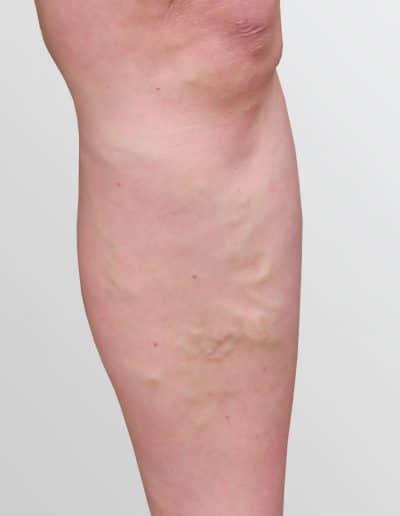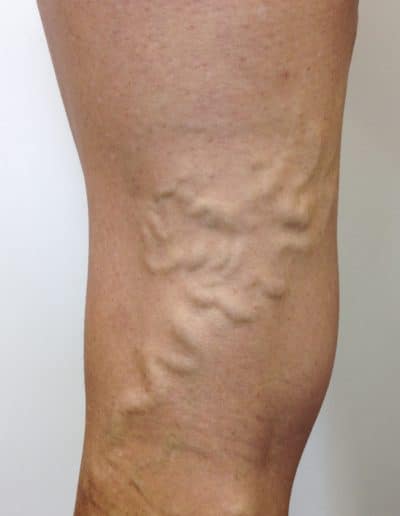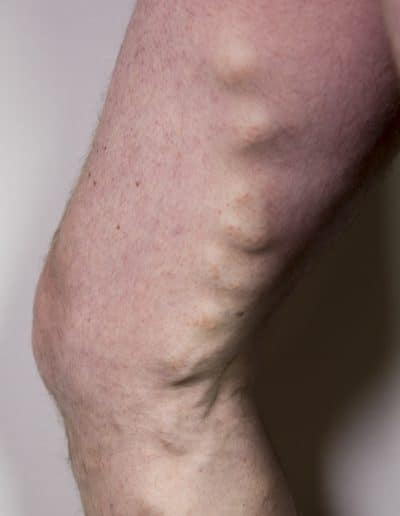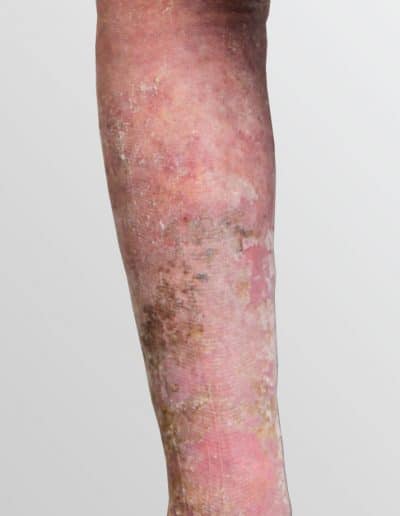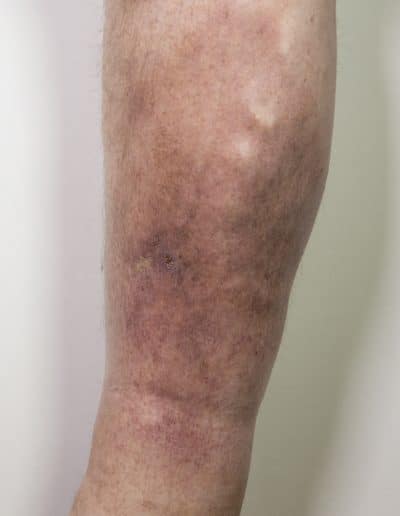Varicose Veins
One-way valves normally allow blood to travel in the veins from the foot back to the heart without flowing back down in the other direction (‘refluxing’). If the valves stop working properly (become leaky or ‘incompetent’) blood pools in the surface leg veins which then swell up over time and become ‘varicose’.
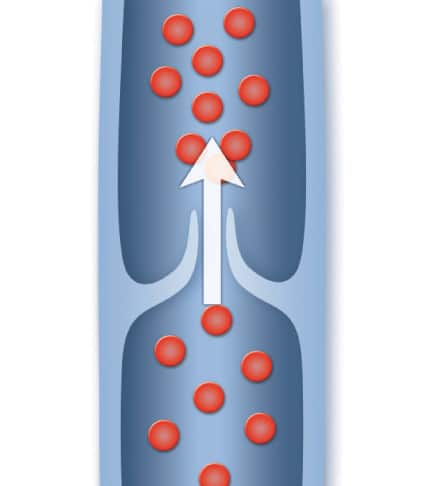
Healthy Vein Valves & Correct Blood Flow
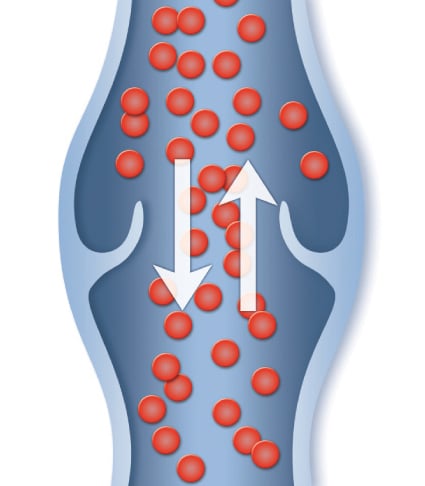
Damaged Vein Valve & Incorrect Blood Flow
FAQs…
What causes Varicose Veins?
It is a relatively common occurrence for the valves within the veins to give away and become incompetent, particularly at the junctions between the deep and superficial venous systems at the groin or behind the knee. So it is the superficial (saphenous) veins that can give rise to varicose veins.
The effect of gravity is very small on the high-pressure arterial system but does have quite a profound effect on the low pressure venous system. When a limb is dependent, such as when a person is walking or sitting upright, gravity causes an increase in pressure within the veins in the leg in the foot are more visible. When the leg and foot is raised above vertical the veins can be seen to empty and are much less prominent.
The one way valves within veins counteract this process when they are healthy and working properly but when the valves fail congestion of blood below those valves occurs causing the veins to distend over time and become varicose. They distend from side to side but also lengthways so become progressively tortuous and unsightly.
Frequently Asked Questions
Are there any varicose veins that can’t be treated?
Foam sclerotherapy is highly versatile, making it suitable for treating nearly any varicose vein issue. It’s especially beneficial for individuals with recurrent varicose veins, meaning veins that have reappeared after previous treatments using different methods. Foam sclerotherapy can effectively address these recurrent issues, often when other more complex procedures may not be suitable.
Why are varicose veins a problem?
People often dislike the appearance of varicose veins. Beyond their look, these veins can cause discomfort, aching, itching, and a sensation of heaviness in the leg. Some individuals report restless legs, a condition frequently linked to varicose veins. Interestingly, the symptoms and visibility of varicose veins can vary widely. Some, often men, may have prominent veins with minimal discomfort, while others might have less noticeable veins that cause significant discomfort. Thus, there’s a broad spectrum concerning the cosmetic concerns and symptomatic experiences of individuals with varicose veins.
Are some people more likely to get varicose veins than others?
Varicose veins can affect anyone, though they are more commonly problematic in females. However, males are not exempt, and these veins can develop at any age. Their occurrence is more frequent after pregnancy. While there isn’t a specific “varicose vein gene,” there’s a noticeable familial tendency, suggesting a genetic predisposition in many cases.
How do I distinguish varicose veins from other conditions?
Varicose veins are protruding and are frequently described as lumpy. For some individuals, they resemble snakes winding up and down the legs. In contrast, other venous conditions manifest as flat veins, not raised above the skin’s surface, commonly referred to as spider veins or reticular veins. Microsclerotherapy is the typical treatment for these flat veins.
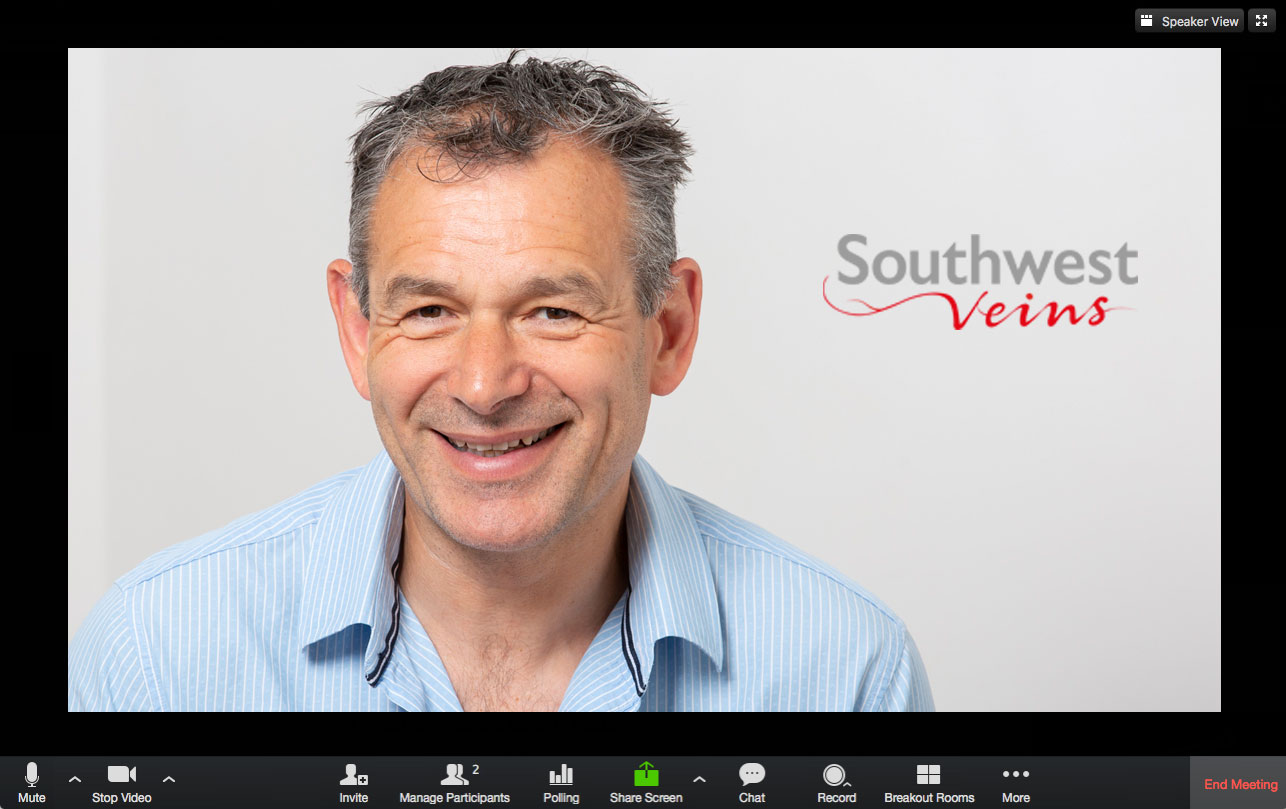
Video appointments
Book your FREE initial consultation to discuss your varicose vein removal via video. This enables us to meet, virtually, face to face and for us to diagnose your condition and answer any specific questions.

